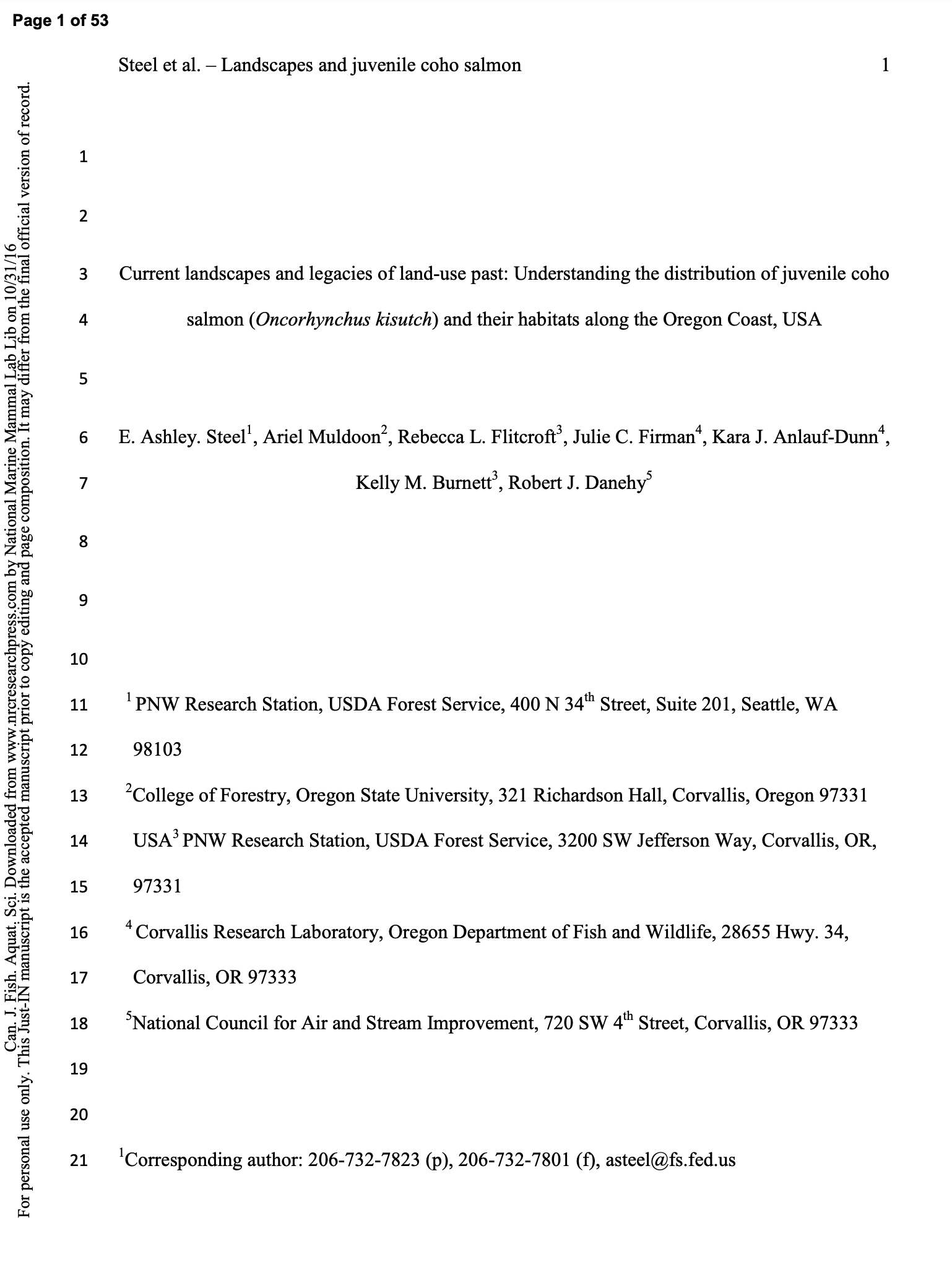
Understanding the distribution of instream habitats and the density of fish within those habitats is 38 essential for effective watershed management and conservation of depressed fisheries 39 populations. For wide-ranging species with a complex life history, such as Pacific salmon, 40 untangling these relationships is particularly challenging. Field data describing instream habitats 41 are generally only available over a small fraction of a species range; occupied habitat types may 42 differ by life stage; and, even within a particular habitat type, suitability and capacity rarely 43 remain constant over time. Landscape-scale studies, based on the conceptual model that natural 44 features and human impacts across watersheds drive instream habitat conditions which in turn 45 regulate, at least to some degree, salmon distribution and productivity, have been relatively 46 successful at predicting adult spawners for coho salmon (Steel et al. 2012; Pess et al. 2002), 47 Chinook salmon (Feist et al. 2003), and steelhead (Steel et al. 2004). Juvenile salmonids and 48 their habitats, however, have rarely been evaluated at the landscape scale. Processes driving the 49 distribution of juveniles and their habitats cannot be inferred from studies of spawning habitats 50 or adults alone (Flitcroft et al. 2012; Gresswell et al. 2006), as juveniles do not simply rear in the 51 same habitats in which they emerged from the spawning gravel. Juvenile salmonids often move 52 over fairly long distances to occupy a separate habitat niche that is likely driven by different 53 suites of natural conditions and is uniquely impacted by human activities.
